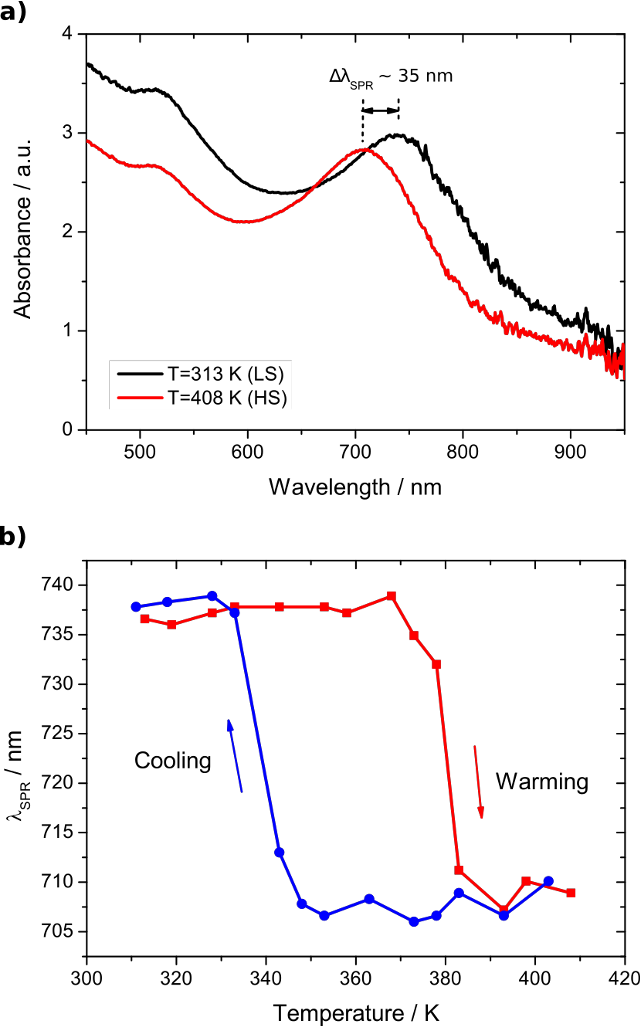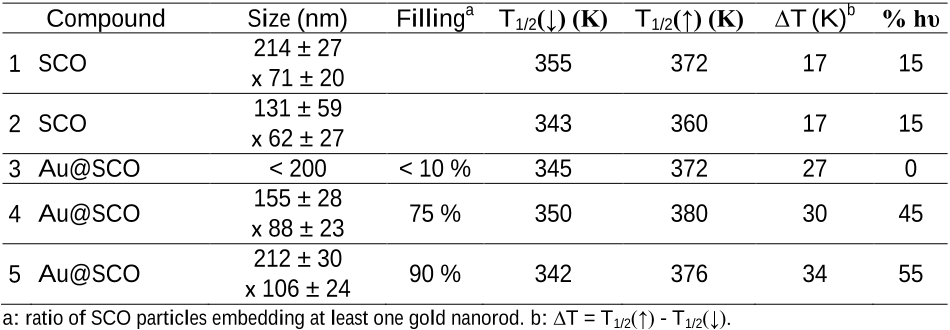




read more











The shift of about 35 nm of the SPR band of the gold nanoparticle embedded in a SCO particle can be used to follow the spin crossover as a function of the temperature.
the AuNRs dispersion, which is stable in CTAB (5 mM) aqueous solution, becomes unstable into a hydro-alcoholic mixture and in the presence of Fe(BF4)2.
the AuNRs used seemed to bring a templating property during the synthesis of the composites, leading to welldefined architectures.
To further improve the heat transfer from the AuNPs to the SCO NPs avoiding the silica interphase, the authors have recently reported a direct grafting of gold nanospheres onto SCO nanoparticles.
Since the SCO compounds very weakly absorb in their HS state [22] , these experiments evidence the strong enhancement of the photoswitching effect for AuNRs doped SCO NPs.
AuNRs are of particular interest since they exhibit a broad longitudinal surface plasmon resonance (SPR) band centred in the nearinfrared, [10] a spectral region where the SCO in the LS state is almost transparent.
It is worth mentioning that in a previous report, up to 2000 W/cm² (from a Raman spectrometer) was required to photoswitch SCO@SiO2@Au composite compounds. [9]
besides the templating effect previously hypothesized in the microscopy analysis, the synthesis using AuNRs seems to broaden the thermal hysteresis loop of both neat SCO and composite nanoparticles present in compounds 4 and 5, compared to compounds 1 and 2.
In consequence, the authors decided to perform the synthesis of the composite materials using a solvent mixture of 40 % of ethanol and 60 % of water.
Up to 2 M of Htrz the dispersion remains stable below 40 % of ethanol, even after 24 hours (Table SI1) while above this ratio, the suspension is destabilized (Table SI2 and SI3 and Figure SI3).